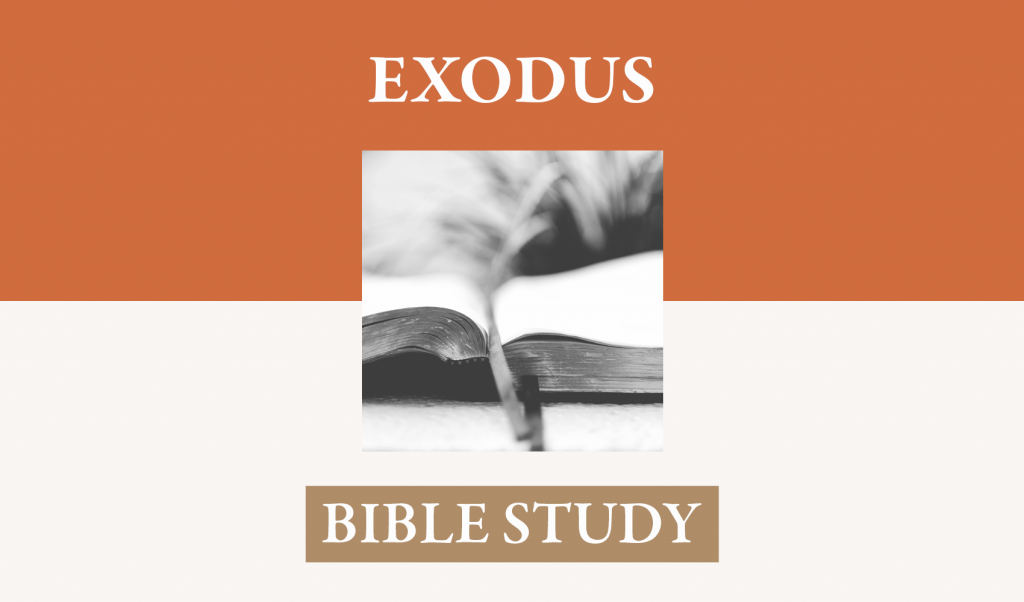I. Following the Commands of God in Building the Tabernacle – Chapters 35-39
A. The spirit of the people – Moses set before the people the material that would be required for the construction of the Tabernacle, according to all that God had told him.
- The stipulation for giving was that it be “a contribution to the Lord” to be gathered for “whoever is of a willing heart” (5).
- Verse 21 presented their response, “Everyone whose heart stirred him and everyone whose spirit moved him came and brought the Lord’s Contribution.” Again verse 22 (and 29), “Then all whose hearts moved them, both men and women, came and brought” all the materials.
- Those who had a skill worked on aspects of the Tabernacle according to specification (25, 26). Particularly Oholiab and Bezalel were “filled with the Spirit of God” for all the various skills needed for the work. Beyond that, both Bezalel and Oholiab had it put into their hearts “to teach” (34). Probably much of the work described in chapters 36-39 they did themselves, but also much of it they oversaw, having instructed other skilled persons how they execute each part of the divinely mandated instructions. It seems that verses 35:10, 36:4 and 36:8 indicate how we are to understand all the descriptions of what Bezalel did personally: Moses, in his initial call said, “Let every skillful man among you come, and make all that the Lord has commanded;” “And all the skillful men who were performing all the work of the sanctuary came, each from the work which he was performing;” “All the skillful men among those who were performing the work made the tabernacle with ten curtains; . . . the work of a skillful workman, Bezalel made them.” The pronoun and verbs then directly describing how each part was made refer to Bezalel [“he joined, he made, he overlaid”] should be understood to refer to his superintendence of all the skilled workers. The verses in 38:22, 23 focus on Bezalel and Oholiab. In chapter 39 the pronouns alter between “he” and “they.”
- The entire description carries an ambience of exuberant labor and involvement.
- The undergirding sub-theme of the text is the energizing influence of the Spirit of God in giving both the heart and the skill for the work and the contributions. One could look on these chapters, not only as denoting the details of labor in constructing the Tabernacle” but as the first “revival” given to Israel.
- After such an abysmal spiritual failure while Moses was on the mountain, this event gave a sense of corporate oneness under the privilege and mercy indicated by their being the people among whom the presence of the Lord would reside.
B. The Abundance of material – Verse 36:5 states that all the workmen came to Moses to tell him that the people had brought “more than enough” (also verse 7) to accomplish all the assigned work. Moses, therefore, issued a proclamation that no longer should any man or woman “perform work for the contributions of the sanctuary.” Chapter 38:21-29 gives an account of the amount of gold, silver, and bronze brought by Israel.
C. The skill of the workers. The text makes consistent reference to the wisdom and skill of the workers. There were “skilled women” who spun with their hands, and others “whose heart stirred with a skill spun the goats’ hair.” Bezalel was filled “with the Spirit of God, in wisdom, in understanding and in knowledge and in all craftsmanship.” He and Oholiab were filled “with skill to perform every work of an engraver and of a designer and of an embroiderer, in blue and in purple and in scarlet material, and in fine linen, and of a weaver, as performers of every work and makers of designs” (35:25, 26, 31, 35). In addition to those two leaders of the crafts, the text speaks of “every skillful person in whom the Lord has put skill and understanding to know how to perform all the work in the construction of the sanctuary” (36:1).
D. The Completion of the work. The description of the making of all the designated parts for the Tabernacle, the garments of the priests, the oil for anointing, and the incense ended with these words: “So the sons of Israel did all the work according to all that the Lord had commanded Moses. And Moses examined all the work and behold, they had done it; just as the Lord had commanded, this they had done. So Moses blessed them” (39:42, 43). Even though great creativity and skill was involved in each task, each workman followed the specific design and instruction revealed by God. He did not leave either the manner of worship or the arrangement of the place of worship to them. It was to stand as a testimony to the necessity of coming before him by means of a designated sacrifice.
II. Following the Commands of God in arranging and consecrating the Tabernacle and its priests – 40:1-33
A. God commanded the arrangement of all the parts of the Tabernacle – 40:1-8. God instructed Moses concerning the placement of each of the articles that had been completed by the craftsmen. The full enclosure can be conceived as two contiguous squares of 50 cubits or about 75 feet [50 by 100 cubits; 75 by 150 feet]. In the front square, moving from the entrance toward the Tabernacle proper was an open space called the court, toward the back side of which was the altar of burnt offerings, and then the laver before reaching the entrance to the holy place. The Tabernacle proper consisted of 10 curtains of blue, purple, and scarlet fine twisted linen, 28 cubits by 4 cubits attached to each other and draped from one side to the other, probably going from just above the ground on one side to the same height on the other, suspended in the top-middle by a ridge pole. It was placed near the front of the second fifty cubit square and was itself 10 cubits broad and 30 cubits deep. It had three coverings over it—rams’ skins, goats’ hair, and porpoise skins. Upon entering it, one would be in the holy place in which were contained the table of shew bread, the candlestick and the altar of incense. Then to enter the Holy of Holies, one would go through a veil and before him would be the ark and the mercy seat.
B. God commands the sanctifying of the whole system – 40:9-15; Every part of the Tabernacle and all its implements were anointed with the oil made for this purpose. Aaron and his sons were washed, had the garments placed on them and then were anointed with oil. All of these things and the priesthood were set apart for service to the Lord.
- Symbolically, this showed the necessity of perfect holiness in the work of redemption; no part of it could be polluted with imperfection. Christ was “holy, blameless, undefiled, set apart from sinners” (Hebrews 7:26).
- Also, the saturation of the entire work with the power and sanctifying operation of the Holy Spirit is set forth in these various anointings. For Christ, the fulfillment of the priesthood, and his anointing see Luke 1:35; 3:22; 4:1, 16-19; 1 Timothy 3:16; Hebrews 9:13, 14.
- The impressive character of these anointings and the serious nature of the work of the priesthood would soon be trivialized and corrupted by the priestly line. Nadab and Abihu, sons of Aaron were killed for offering unwarranted fire on the altar (Leviticus 10:1-3); the sons of Eli profaned their office and God brought about their death (1 Samuel 2:12-17; 22-25; 4:11); the post-exilic priests profaned their holy task and God cursed their blessings (Malachi 2).
C. Moses does all that God commanded – 40:16-33. Moses performed the setting up of these parts that now were crafted with great skill and in accordance with divine specification (25:9). The arrangement was as important as the making: “Thus Moses did; according to all that the Lord had commanded him, so he did” (40:16).
D. The regulative Principle –
- The fulfillment of all these things in Christ and his redemptive work has freed us, not only from the condemning power of the law, but from the smothering effects of such a large number of requirements to maintain all the sacrifices, and burnings, and disposals in their right order. Peter commented on the attempt to impose circumcision and some other aspects of the “law of Moses” on the Gentiles in this way: “Now, therefore, why do you test God by putting a yoke on the neck of the disciples which neither our fathers nor we were able to bear?” (Acts 15:5, 10).
- The cessation of the ceremonial law, however, has not destroyed the principle of our absolute dependence on divine revelation for acceptable worship. Now, “we are the true circumcision who worship by the Spirit of God, who glory in Christ Jesus, and put no confidence in the flesh” (Philippians 3:3). Now those who worship God truly worship in “Spirit and in truth” (John 4:23, 24).
- To worship in Spirit is to be brought to repentance and faith by the regenerating work of the Spirit so as the look to Christ only for our acceptance before God. The Spirit gives the gifts by which we are knit together with as punctilious certainty as the Tabernacle was constructed of all the parts specified by God himself—“From whom the whole body, joined and knit together by what every joint supplies, according to the effective working by which every part does its share, causes growth of the body for the edifying of itself in love” (Ephesians 4:16).
- To worship in Truth is to see in Christ the truth that is set forth in symbol in all of these sacrifices and ceremonies. “The Law came through Moses: grace and truth came through Jesus Christ” (John 1:17). Also it means that we worship according to the exhortations of his word. We pray, we sing, we give, we practice the ordinances, we confess the faith and our sins, we discipline, we cherish the proclamation of the divinely revealed word. We do not import into our worship unwarranted elements that give an uncertain sound or copy the values of the world. We value all the word, explore all of its riches, and seek to expand the usefulness of divinely-granted gifts in ways that increase the clarity of our communication in gospel truth. What God prohibits, we prohibit; what God commands, we do. All else is to be left outside.
- On this very issue, Calvin wrote _ “I know how difficult it is to persuade the world that God disapproves of all modes of worship not expressly sanctioned by His Word. The opposite persuasion which cleaves to them, being seated, as it were, in their very bones and marrow, is, that whatever they do has in itself a sufficient sanction, provided it exhibits some kind of zeal for the honor of God. But since God not only regards as fruitless, but also plainly abominates, whatever we undertake from zeal to His worship, if at variance with His command, what do we gain by a contrary course? The words of God are clear and distinct, “Obedience is better than sacrifice.” “In vain do they worship me, teaching for doctrines the commandments of men,” (1 Samuel 15:22; Matthew 15:9.) Every addition to His word, especially in this matter, is a lie. Mere “will worship” is vanity. This is the decision, and when once the judge has decided, it is no longer time to debate.
III. God inhabits his designated dwelling place – 40:34-38
A. God by cloud and by fire, by day and by night, inhabited the tent of meeting and a particular glory of divine power and beauty filled the Tabernacle.
B. See Numbers 9:15-23 for a more detailed and emphatic description as to the inviolability of the settling and the movement of the cloud of God’s presence. He determined every move the people made and the time, long or short, that they spent in any location. “At the command of the Lord they remained encamped, and at the command of the Lord they journeyed; they kept the charge of the Lord at the command of the Lord by the hand of Moses” (Numbers 9:23). Each of us, as part of the household of God, will be in place in this world just as long as he determines; when the cloud moves, so shall we.
C. See Numbers 4:1-33 for a description of how all of this would be moved when they set out from one place to another.
D. The incarnation of Christ fulfilled all the symbolism of the divine, saving presence of God among his people. Jesus was the “word made flesh” who dwelt, “tabernacled,” among us “and we beheld his glory, glory as of the only-begotten of the Father” (John 1:14). “For it pleased the Father that in him all the fullness should dwell” (Colossians 1:19). “For in him dwells all the fullness of the Godhead bodily” (Colossians 2:9). Jesus is the “effulgence of God’s glory and the character, fully accurate presentation, of his person” and “made purification for sins” (Hebrews 1:3). All that the Tabernacle foretold, all that it testified as necessary for an approach to God, Jesus has fulfilled; he has completed it all.




















